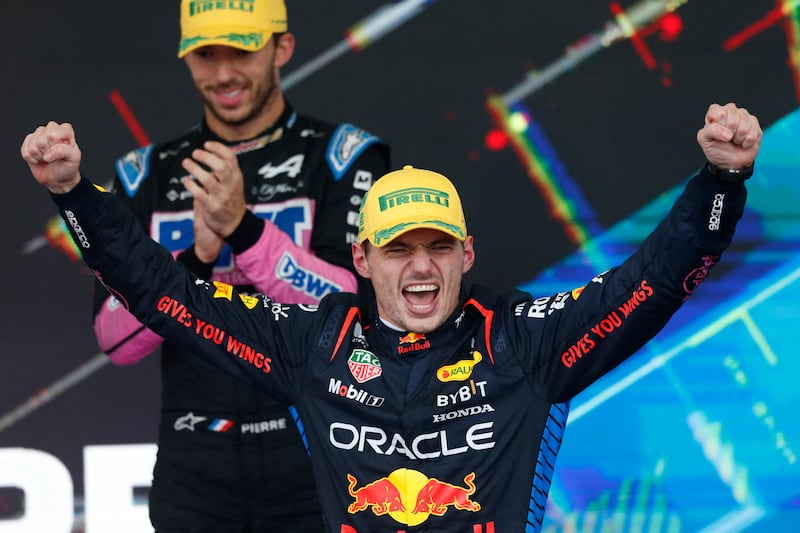Max Verstappen was clear all season he wanted to win the Formula One world title with a dominant car, just as he had the previous two years. Much as he might have enjoyed more of a canter, the fight for his fourth title, secured in Las Vegas, was not only far greater sport but also showed how complete a driver he has matured into.
Beating him in future is going to be a fearsome task, as his title rival Lando Norris acknowledged.
In the early stages of the season Verstappen appeared to be having it all his own way again. With the Red Bull quick out of the blocks, he was bossing it on track. At the opening round in Bahrain his confidence and pace was intimidating, with an advantage at some points between eight-tenths and a second a lap, an extraordinary chasm as he almost flippantly asked his engineer Gianpiero Lambiase if he needed to push.
He seemed unfazed by the controversy which had unfolded at the start of the season when team principal Christian Horner was accused of inappropriate behaviour by a woman employee, a complaint subsequently dismissed by an independent investigation but which was destabilising nonetheless.
Bahrain was something of a harbinger and wins followed in four of the opening five meetings, the only hiccup a DNF in Australia with a brake problem. But the season began to turn at round six in Miami where McLaren deployed their first major upgrades. These proved revolutionary, delivering a car to take the fight to Red Bull. It was also here that Verstappen first identified that he believed there were issues with his drive. He noted a disturbing lack of grip and, to further rock the boat, long-time design genius Adrian Newey announced over the weekend he was to leave Red Bull after almost two decades. Norris took his debut win and began his fightback.
Verstappen could not be written off and delivered a series of battling drives to take wins in three of the next four races, the last in Spain in June, after which the wheels really did come off.
With the McLaren now so quick, Red Bull were chasing every incremental gain but the developments they were bringing proved only to be detrimental. Upgrades that began in Miami left the car out of balance, attempts to compensate for it with set-up only worked the tyres harder, compounding degradation and grip issues. The oversteer that Verstappen favoured was gone, all making his job even harder.

What followed, however, showed Verstappen’s determination. He ground out a series of strong results, with no wins over a full five-month period but a series of hard-fought results that prevented Norris from narrowing the gap too quickly, as did some controversial and at times ruthless and overaggressive driving that did the world champion a disservice.
Crucially all this was in a car Verstappen had decried as an “undriveable monster” after he was reduced to sixth in Monza, a race where the Red Bull was comprehensively outpaced by both McLaren and Ferrari.
He was aided to an extent by McLaren not choosing sooner to prioritise Norris’s title tilt and several errors the British driver made which proved costly in his attempt to bridge the gap. But fundamentally it had been Verstappen driving the wheels off a recalcitrant car that made the difference. His team-mate Sergio Pérez was struggling at times to even score points in the same car, which he said was handling “like a boat”.
It was the period when he ground it out almost by will alone. “I always demand a lot from myself,” he said. “I hate making mistakes. I put that pressure on myself every weekend. If you want to win a championship, you cannot afford bad results.”
Having gone five months without a win, Verstappen all but sealed it with a coup de grâce in Brazil. His victory in the wet, from 17th on the grid, was an absolute masterclass. With Norris starting from pole, a major swing in the British driver’s favour was expected but Verstappen was exceptional in treacherous conditions that saw a host of drivers crashing out and Norris dropping to sixth. Verstappen’s touch and pace in the wet such that he scythed through the field and enjoyed a full 20-second lead by the flag.
“It was a defining moment for the championship,” Norris said, but also a moment that defined the level Verstappen has been operating at this season. “If you want to beat Max you have to be close to perfect,” Norris added. “He is one of the best the sport will ever see.” Which on his form, to secure this title, was fair assessment indeed. – Guardian
















